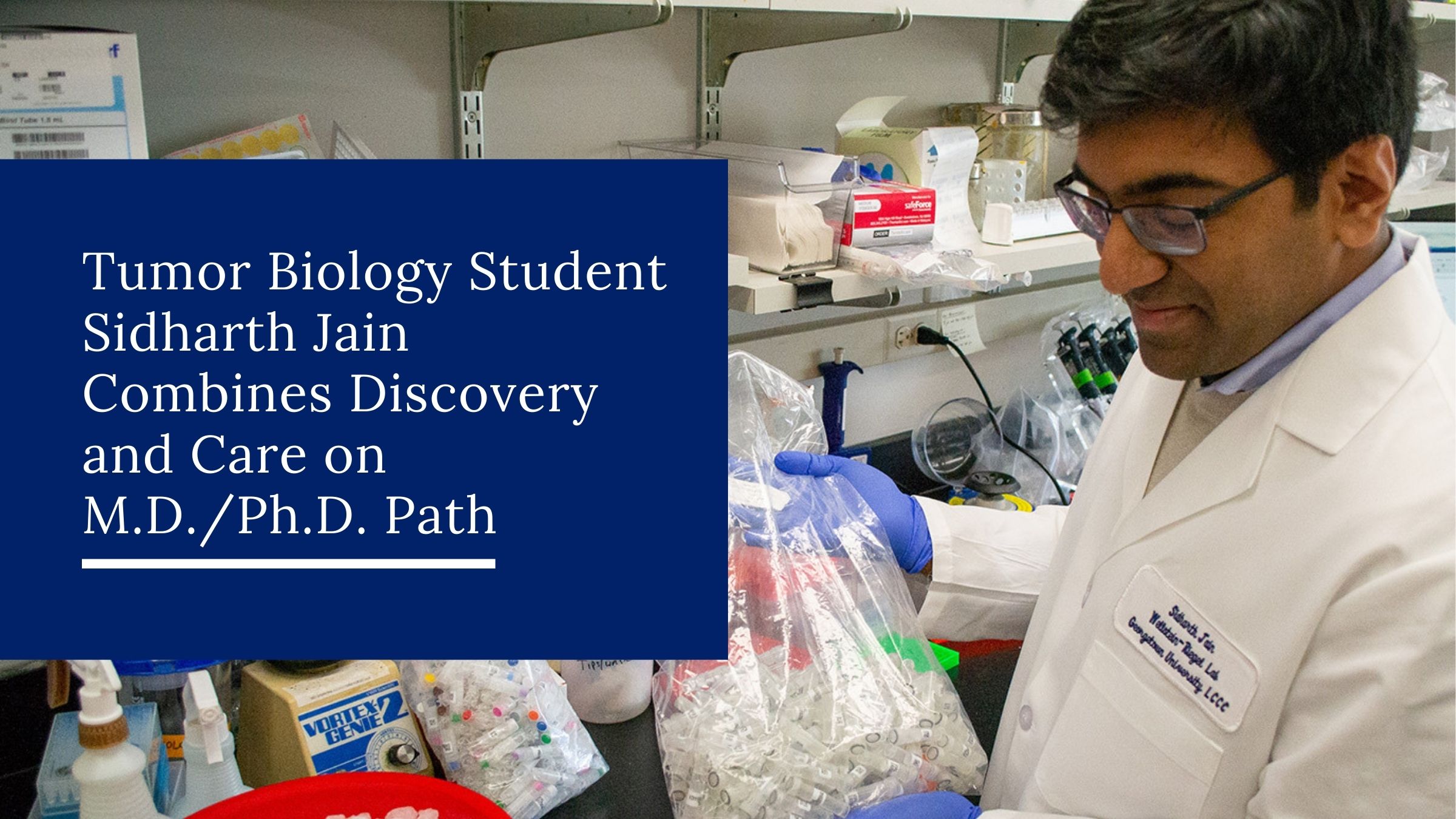Tumor Biology Student Sidharth Jain Combines Discovery and Care on M.D./Ph.D. Path
As an M.D./Ph.D. in Tumor Biology student, Sidharth Jain works between two worlds of health science. On the Ph.D. side, lab research, data analysis and discovery; on the M.D. side, patients fighting for their lives.
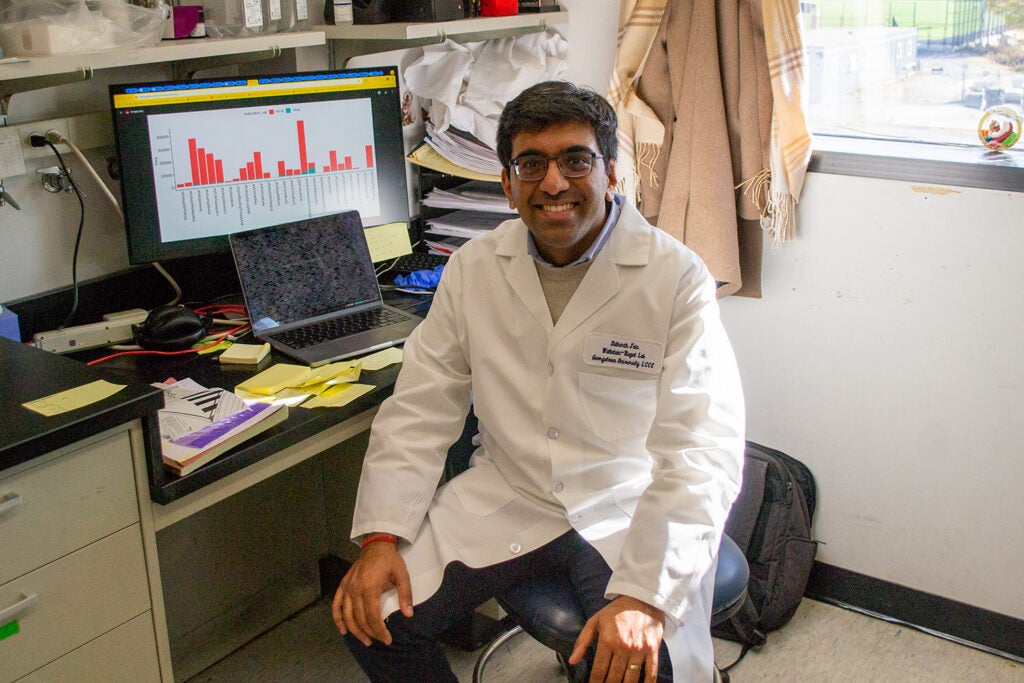
Sidharth Jain sits at a workstation in the Wellstein-Riegel Lab.
Jain’s academic career shows what can be achieved when research and clinical care come together. Alongside students and faculty from Georgetown biomedical programs and Lombardi Comprehensive Cancer Center, he is working to develop an improved technique for diagnosing and monitoring cancer, allowing clinicians to administer more personalized and responsive treatment.
“I’m hoping that that will really make an impact on the field of cancer research,” Jain said. “And hopefully I’ll go back to medical school with that kind of shaping my perspective, and get a better perspective on what it means to be a clinician.”
Research and Clinical Care Together
M.D./Ph.D. students are a small, ambitious group on the Hilltop. They typically start with two years of preclinical study in the School of Medicine, then jump into the Ph.D. coursework and lab rotations. After defending a dissertation, they return to med school for clinical experience. All told, the M.D./Ph.D. path takes about eight years of intensive study.
Jain said M.D./Ph.D. students often begin with aspirations in clinical care, then take an interest in research, mirroring the M.D. start of the Georgetown program. For Jain, it was the other way around. Originally from New Jersey, he earned a B.A. in Biology from New York University, then completed two years in a computational role in Boston at the Broad Institute of MIT and Harvard, testing cancer cells to identify critical genes that could potentially be targeted to destroy the cancer.

Jain views research data in the Wellstein-Riegel Lab.
It was at the Broad Institute that Jain started to experience the synergy between the research and clinical care. William Sellers, M.D. (B’82), the principal investigator for Jain’s project, was also trained as a clinician and could call on his experience with patients in the research setting.
Jain recalled a “pivotal experience”: Computational researchers had noticed signs of radiation exposure in the genome sequences of cancer patients, and were wondering if radiation exposure had caused the cancer. Sellers explained to them that radiation treatments can also cause changes in DNA mutations, and correctly hypothesized that the patients had undergone radiation treatment after the cancer manifested.
Jain was also inspired by his observation of a physician-researcher interacting with patients, asking them about their families, their lives – everything that played a role in their physical health and broader wellbeing. Jain recognized the importance of the holistic human side of medical care.
“That to me was so eye-opening and so inspiring,” he said. “It’s treating people like they’re actual humans, but also using their experience to drive the research forward and actually figure out which areas of research to focus on.”
The death of Jain’s grandfather, himself a physician, further impressed upon Jain how a compassionate clinician can help a patient and their family, even in the most difficult circumstances.
And so, he decided to pursue an M.D./Ph.D.
An Eventful Start
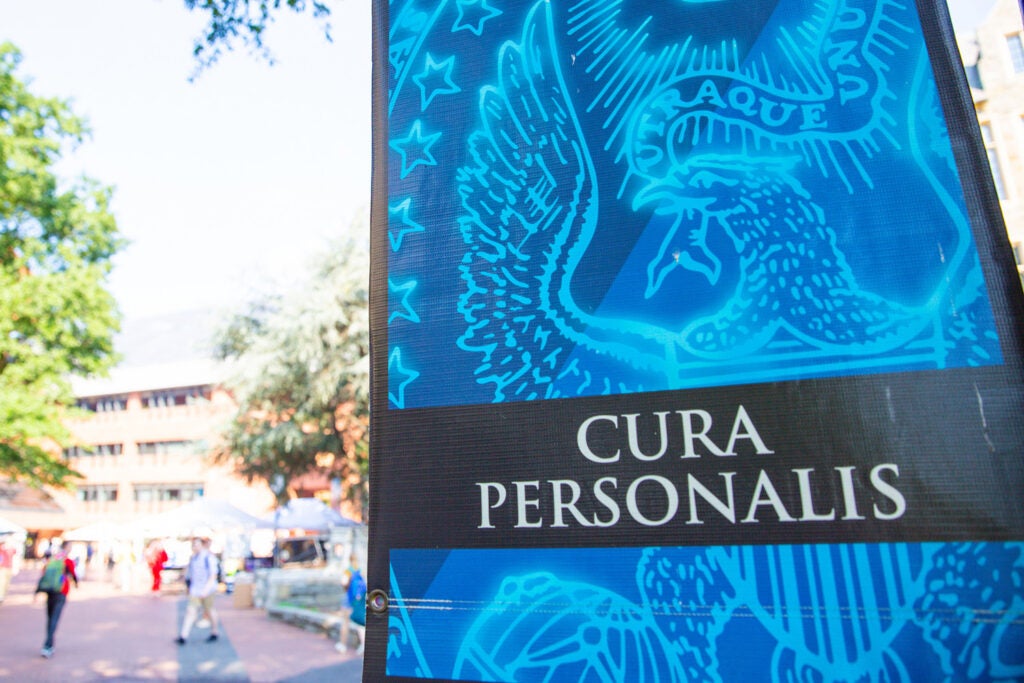
Jain chose Georgetown for his doctoral studies in light of its long history in medicine and its proximity to the National Institutes of Health and pharmaceutical companies in the national capital region. The university was also close to his brother, who was living in Washington, D.C. And its central tenet of cura personalis – care of the whole person – resonated with Jain.
“As soon as I had heard about that, I was like, yeah, that sounds like what that physician [at the Broad Institute] was trying to do – treating the whole person. … That ethos aligns with what I want to do.”
He began his studies in 2019 as one of a handful of M.D./Ph.D.s in a medical class of hundreds. The cohort toiled through the many preclinical modules of the School of Medicine’s Foundational Phase. “The metaphor they love to use here at Georgetown is like trying to eat 10 pancakes a day, every day, for like a year,” Jain said.
Jain started his first Ph.D. rotation in February 2020, making his return to computational research while also taking on the M.D. coursework.
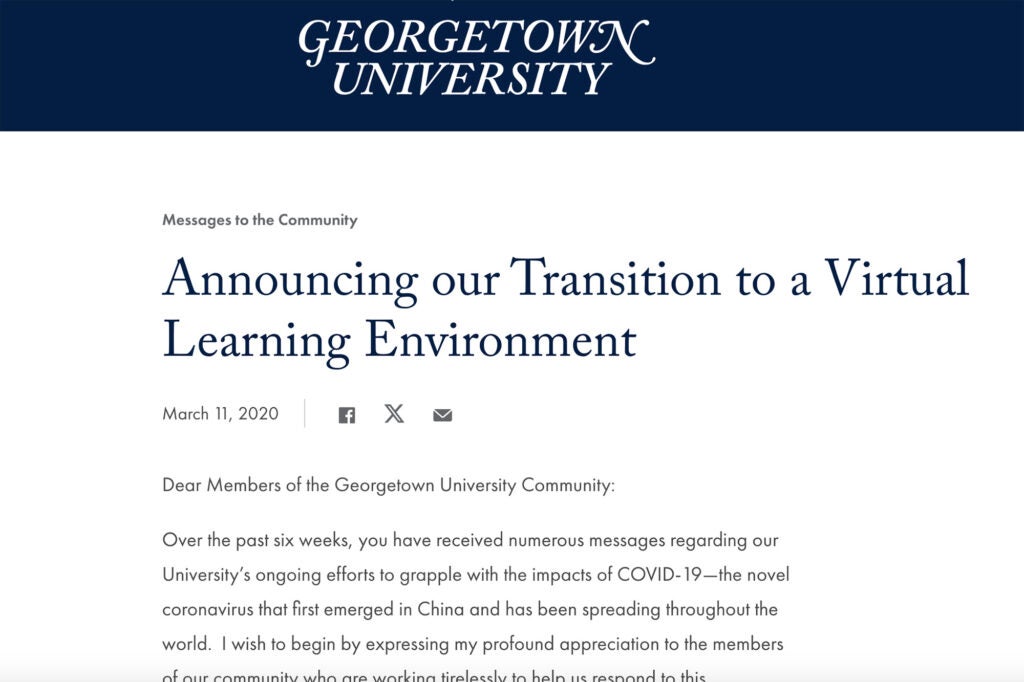
A university announcement dated March 11, 2020, marks the university’s move to remote instruction amid the COVID-19 pandemic.
In the following weeks, new medical realities imposed themselves on both the M.D. and Ph.D. programs, along with the rest of the university. On March 8, MedStar Georgetown University Hospital was caring for its first confirmed COVID-19 patient. Three days later, Georgetown announced a transition to virtual learning in order to deter the spread of the virus. The medical students kept studying, trading in-person dissections for remote simulations.
Jain joined researchers around the world mobilizing to fight the pandemic. In his first Ph.D. rotation, with oncology professor Sivanesan Dakshanamurthy, Ph.D., MBA, Jain helped to re-analyze existing data on FDA-approved medications, searching for drugs that might be able to treat COVID-19. He finished with a first-author publication on one potential treatment.
“This was summer of 2020, so literally, the vaccines hadn’t even come out at that point,” Jain recalled. “It was just, like, ‘Let me find something.’ And then right as soon as we had gotten the research into the revision process, that’s when the vaccines started coming out. … I think the push to publish that research started dying down a little bit, because there were now preventative measures for some patients.”
Into the Lab
By Fall 2020, academic life had started to get back to normal. Jain started an in-person research rotation with Anton Wellstein, M.D., Ph.D., a professor in the School of Medicine’s Department of Oncology and Biomedical Graduate Education’s Tumor Biology program.
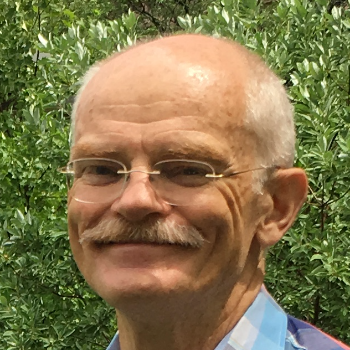
Anton Wellstein, M.D., Ph.D.
Wellstein’s team is working on expanding the effectiveness of liquid biopsy, the detection of cancer cell DNA that ends up floating in the bloodstream. With liquid biopsy techniques, clinicians could gain the ability to track the progression and remission of cancer with a simple blood draw, rather than a surgical biopsy or scan. The relatively new technology allows for more frequent assessment of a patient’s condition, which can help to identify cancer at an earlier stage or adjust treatment more quickly based on a patient’s response, according to the National Cancer Institute.
One limitation of liquid biopsy is that the cancer DNA circulating in the bloodstream could be from any number of places in the body. Wellstein, Jain and fellow researchers are learning how to use DNA methylation patterns to trace DNA in the blood to the organs it came from – allowing them to pinpoint the cancerous organs.
“Each cell type has a different ZIP code in DNA methylation,” Wellstein explained. “So, you can see from a ZIP code what neighborhood you are from. … You actually see the origin that the cell comes from.”
The research, as applied to melanoma in particular, became the subject of Jain’s Ph.D. dissertation.
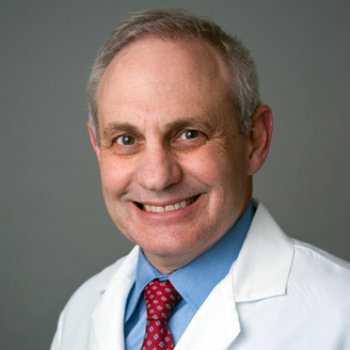
Michael Atkins, M.D.
Wellstein’s lab spans university programs as well as the clinical/research spectrum. Jain works with Michael Atkins, M.D., deputy director of Lombardi Comprehensive Cancer Center, who led the clinical trial that produced the blood samples; Megan McNamara, an M.D./Ph.D. student now back at the School of Medicine after completing her Ph.D.; Amber Alley, M.S., a Tumor Biology Ph.D. student focused on breast cancer; and Patrick McDeed, M.S.., a Ph.D. in Biostatistics student who developed the method for the liquid biopsy project, among others.
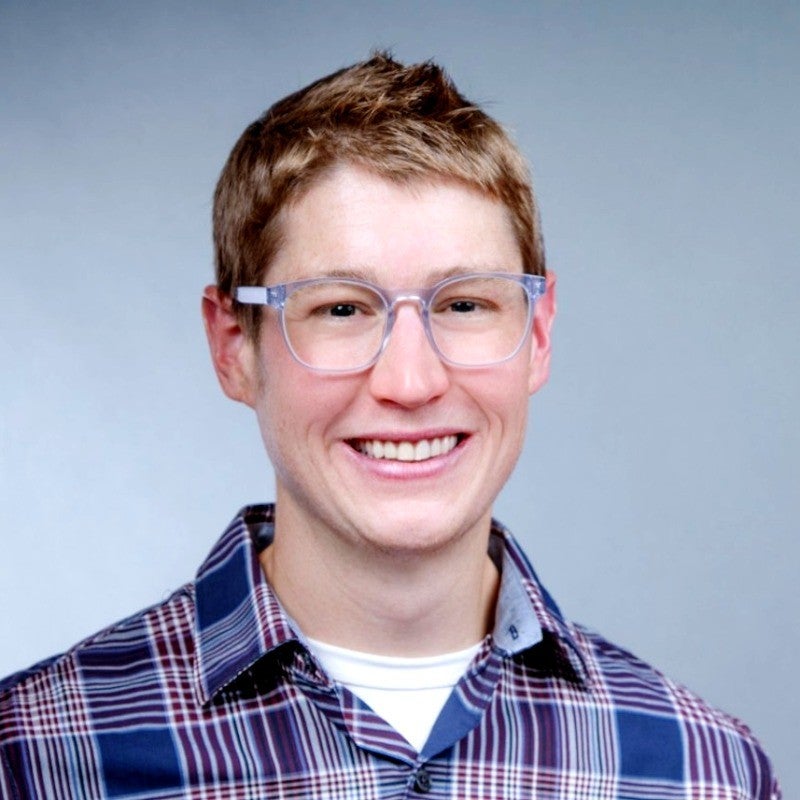
Patrick McDeed, M.S.
McDeed praised the diverse skills of the research team: “It’s a very interdisciplinary, true team science type project. … It’s been a really great experience working with the team.”
Wellstein, who holds an M.D. and Ph.D. of his own, said he’s mentored about 30 Ph.D. students, including a number of M.D./Ph.D.s. He said he tries to teach student researchers to “go where the nose takes you,” responding to initial results by asking new questions and pursuing new goals.
“The beauty of working with these students – I really enjoy it,” Wellstein said. “They bring a lot of new ideas, questions.”
The doctoral students also pass on what they’re learning to undergraduates. Jain said he was working with train three “incredibly smart and talented” undergraduate students – Harry Sun, Dori Rosenstrauch, and Natalie Thompson.
“One of the reasons why that is very productive for the research is you have to explain your research to somebody else,” Wellstein said. “And you want to explain it well enough that they will help you with your job. … It’s sort of a cascade of knowledge.”
The Path Ahead
As Jain prepares to defend his dissertation in January 2025, he has built an impressive research record, with a handful of indexed publications in 2024 alone. He has also proven himself as a communicator of research, earning first-place honors for his oral presentation at the Georgetown Medical Center Graduate Student Organization’s (MCGSO) Student Research Day.
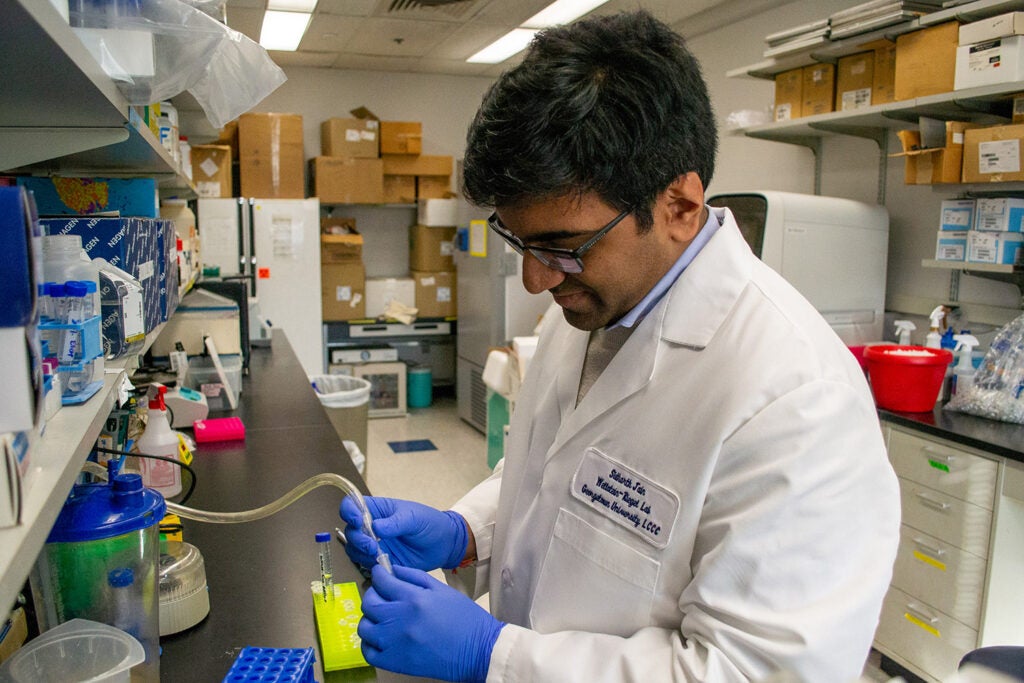
At the same time, he is also getting ready to dive back into medical school, where he’ll go through a rigorous series of clerkships to build hands-on experience in everything from family and internal medicine to surgery to psychiatry.
It will be a change of pace after years in the lab. Jain hopes to acclimate to the emotional demands of treating patients, and to bring a clinician’s compassion and a researcher’s curiosity to each encounter.
“Seeing how I build that fortitude is something I’m looking forward to,” he said. “That’s what I’m striving for.”
Read More
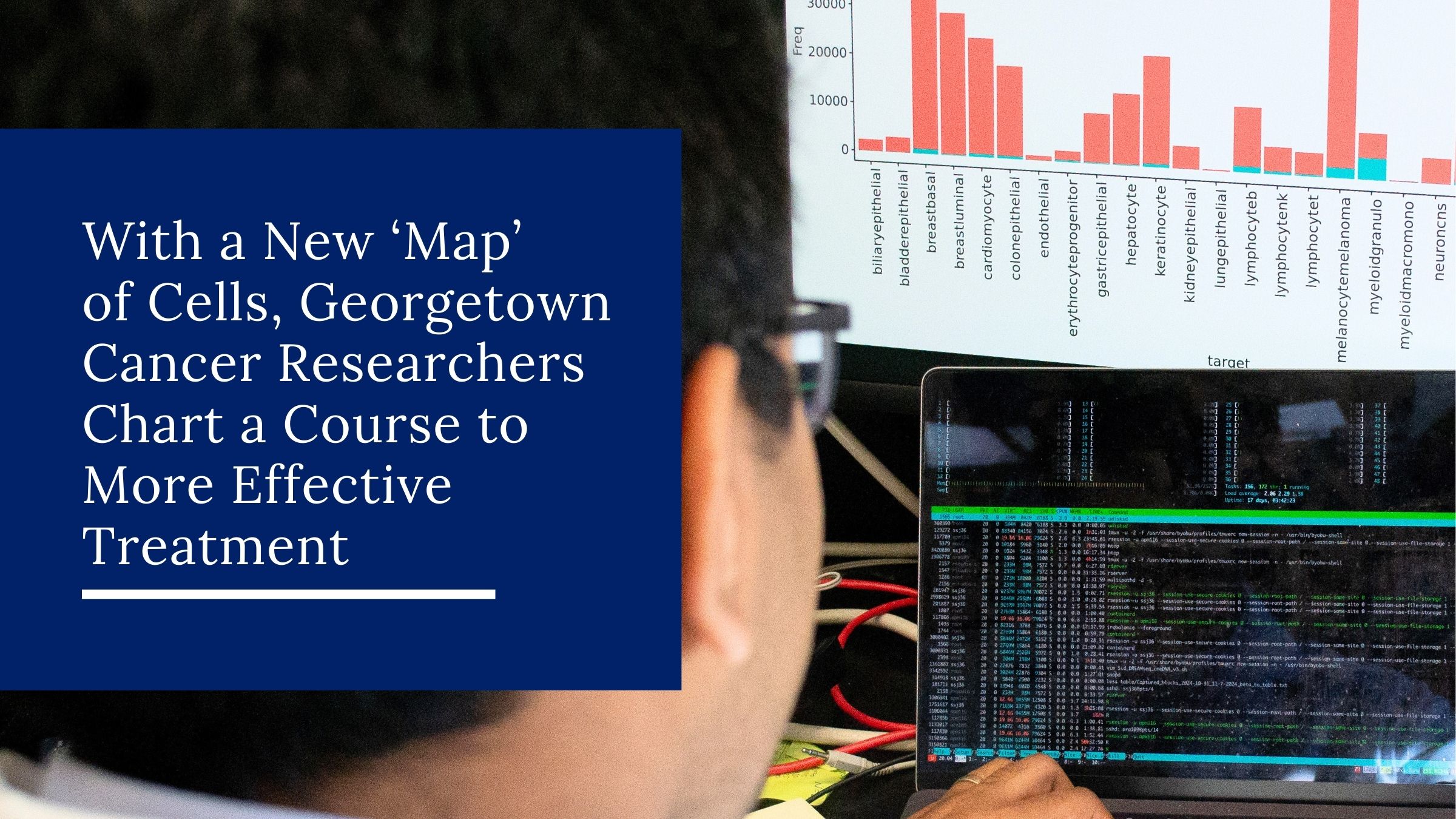
News
With a New ‘Map’ of Cells, Georgetown Cancer Researchers Chart a Course to More Effective Treatment
Faculty and students led by Professor Anton Wellstein are working to expand the capabilities of liquid biopsy – the examination of cancer DNA in the bloodstream. Their findings could help clinicians to diagnose and monitor cancer through simple blood tests rather than time-consuming scans, allowing for more responsive treatment.
January 14, 2025

